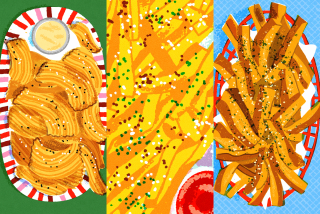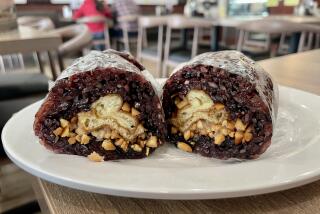Fried Rice, African Style
- Share via
The South is the rice-eatingest part of the country. Partly this is because rice has been raised in Louisiana and South Carolina since colonial times, but it’s also because the African slaves brought a taste for rice with them, and even one African rice dish.
West Africa has its own species of rice, Oryza glaberrima, also known as dry rice. It’s a less productive grain than Asian rice, which is grown in the flooded fields called rice paddies (well, no grain is as productive as paddy rice), but it suits the African climate better. It was domesticated from a grass that grows wild in the Sahel belt directly south of the Sahara Desert, probably around 1,500 BC at the northern bend of the Niger River in the present-day country of Mali.
As a crop, dry rice pretty much stayed put in West Africa. The Egyptians knew nothing about it in Pharaonic times. Even later, the Greek geographer Strabo, writing about AD 12, didn’t mention rice in his description of Egypt, though he did observe that it was available in the Libyan oasis of Aujila, which traded with the Sahel countries.
When Europeans finally reached the fabled city of Timbuktu in the 19th century, they found that rice was the staple crop of the Songhai people living there. It was also the staple of the Mandingos of Gambia, the Hausas of Niger and Nigeria and many other West African nations. Usually they boiled it plain or made it into porridge, and sometimes they served a thin rice porridge as a beverage. The Hausas liked to flavor this with milk, honey and spices.
And as early as the 14th century, the Arab traveler Ibn Battuta recorded that fried rice cakes were sold on the streets of Timbuktu . . . as they were in this country, in fact, well into this century. African American women used to sell sweet deep-fried rice balls called calas on the streets of New Orleans.
Of course, these days marketing is important and they’d probably want to call them Rice-a-Calas, the Timbuktu Treat.
More to Read
Sign up for The Wild
We’ll help you find the best places to hike, bike and run, as well as the perfect silent spots for meditation and yoga.
You may occasionally receive promotional content from the Los Angeles Times.






